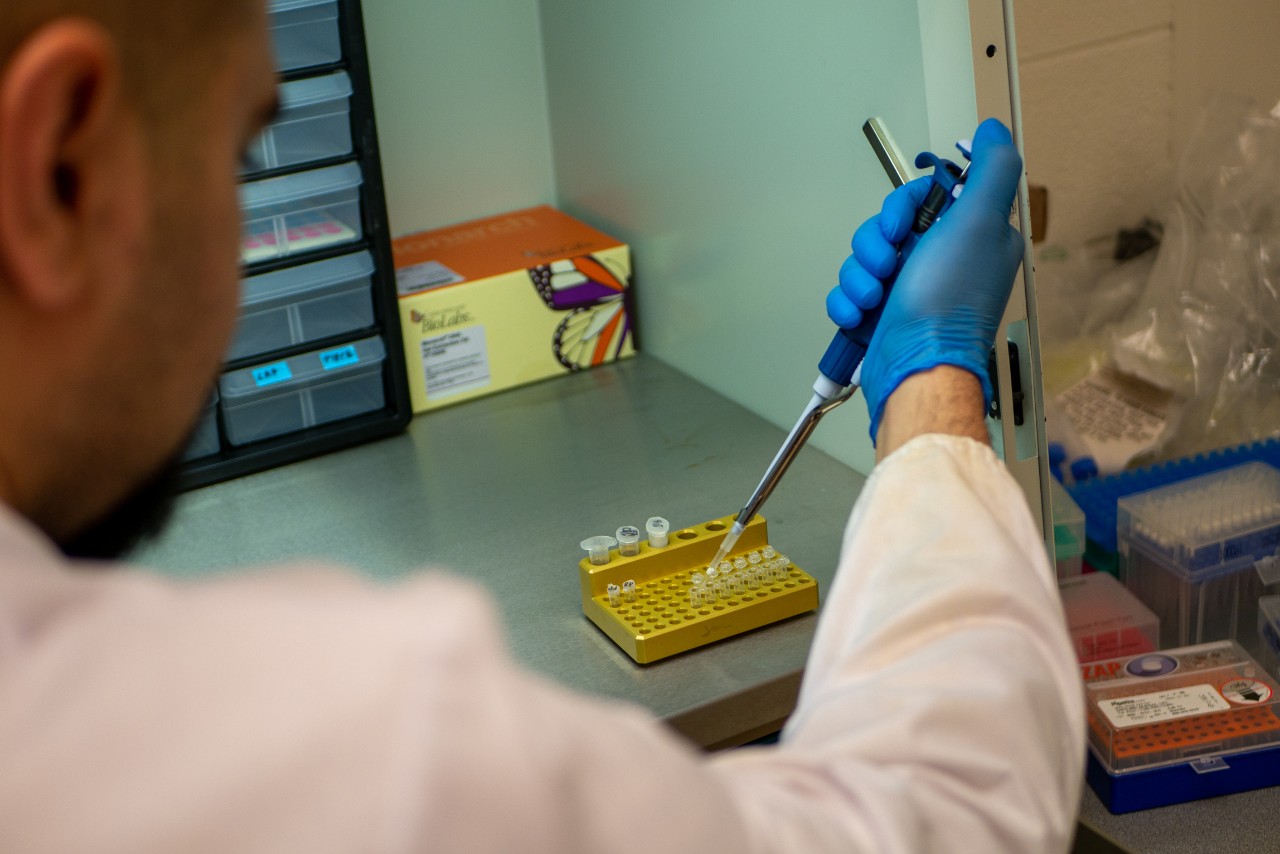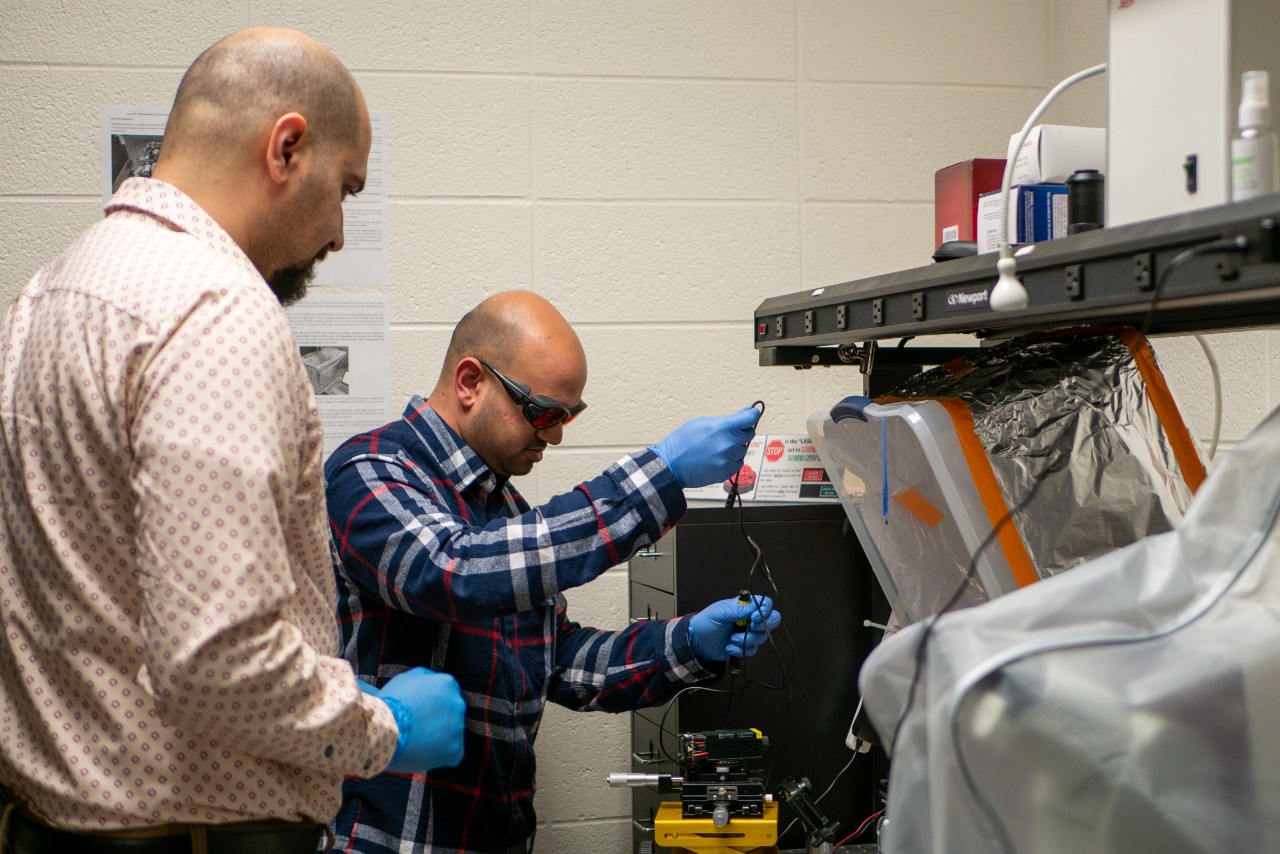Aashish Priye, assistant professor of chemical engineering at the University of Cincinnati, is using microfluidics to make infectious disease testing faster, more cost-effective and easily accessible. He received the prestigious National Science Foundation CAREER Award in 2023 to continue this research for the next five years.
"The problem with these tests is that they lack accuracy and don't detect the infection," Priye said. "Antigen tests detect the immune response that our body generates to a virus. This means that even after the virus has left your system, your sample can still return a false positive result."
The gold standard for infectious disease testing is polymerase chain reaction (PCR) tests. This test directly detects the virus that is infecting the patient. The results are very reliable; however, PCR testing requires bulky, expensive machinery that is only available in specialized clinics or hospitals and must be operated by trained technicians. It can also take days to receive a result.
Priye wants to understand the physics of how fluids behave in micro-channels and apply them to create portable, PCR-like testing devices. These point-of-care devices will allow people to receive accurate diagnostic results instantly, from home, eliminating the need to travel for testing.

Aashish Priye's lab. Photo/Corrie Mayer CEAS Marketing.
"What we're trying to do is understand how we can do PCR-like tests in a manner that is doable at home with simplified instrumentation and without requiring trained technicians," Priye said.
Priye and the graduate students in his lab are working on three specific ways to simplify this testing process. First, the biochemistry behind traditional PCR tests requires repetitive heating and cooling of the test sample, called thermal-cycling. Using a substitute biochemistry method, loop-mediated isothermal amplification, or LAMP, the need for this thermal-cycling is removed. Once perfected, LAMP could be a simplified PCR alternative.
Priye and his team are also working on a smartphone application that can tell a patient their result. In current PCR tests, specialized and expensive camera instruments - called fluorometers - are used to distinguish between positive and negative test results by analyzing the brightness of PCR samples. Instead, Priye proposes using smartphone cameras to detect whether the sample is bright or not, and a smartphone app using machine learning and image analysis to determine patient results and state of infection.
"Together, these efforts make it possible to make a handheld device where you put your nasal swab in, put your smartphone on top of the device and it does everything for you," Priye said.
After receiving his bachelor's degree in chemical engineering in India, Priye discovered how broad the field is, encompassing biomedical engineering, biochemistry, physics, mathematics and more.
Priye came to the U.S. to pursue his Ph.D. at Texas A&M University and completed a postdoctoral fellowship at Sandia National Labratories in California before joining UC's College of Engineering and Applied Science in 2018. He also leads a team of interdisciplinary researchers at UC's Digital Futures.
Along with his research, Priye teaches two graduate level classes: Advanced Transport Phenomena 1 and 2, and an elective he created in the field of microfluidics. In this elective, he shares with students how microfluidics is helping the world. Contributing to solving the world's scientific problems is Priye's motivation for his work.
"I try to identify the big problems that science can address in the world, and even if it's not my area of study, I try to see if there's some value I can add and solve part of the problem," he said.
Priye shared that without his Ph.D. adviser, Victor Ugaz, his postdoctoral mentor, Robert Meagher, and the graduate students in his lab, the work would not be possible.
"My colleagues and my students, most of all, have really put my vision into reality so far," he said.

Priye working with one of the grad students in his lab. Photo/Corrie Mayer CEAS Marketing.
Featured image at top: Priye working with laser technology in his lab. Photo/Corrie Mayer CEAS Marketing.






